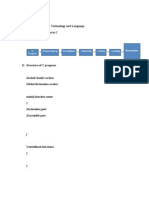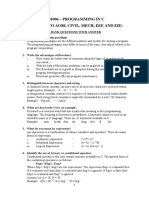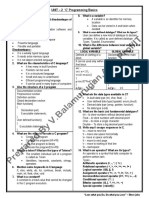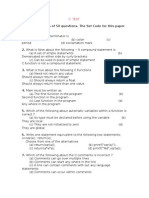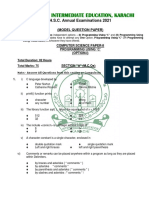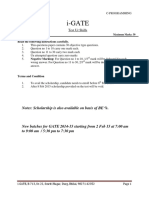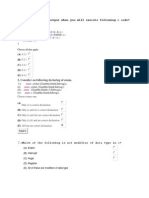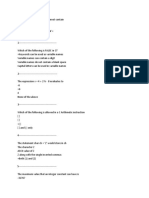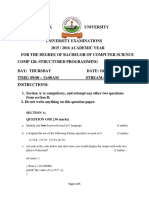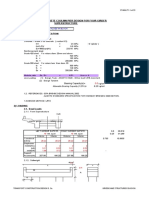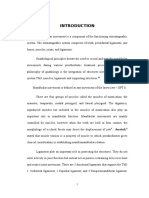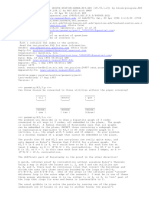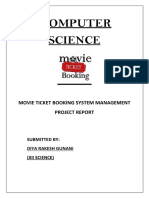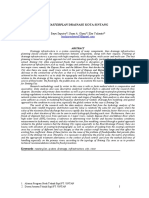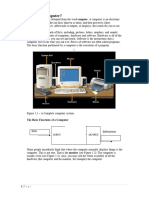Ganpat University
ACHARYA MOTIBHAI PATEL INSTITUTE OF COMPUTER STUDEIS
BCA
ASSIGNMENT QUESTIONS (2022-2023)
SUBJECT CODE: U31A1LDP
SUBJECT NAME: LOGIC DEVELOPMENT PROGRAMMING-I
SUBJECT FACULTY NAME: ASST.PROF. FALGUNI A. SUTHAR / Ms. Prachi Maniyar
SR.NO. ASSIGNMENT – 1
1. What is an algorithm? Explain Advantages of Algorithm.
2. Explain different types of algorithm.
3. What is a Flowchart? Explain different symbols used in
Flowchart.
SR.NO. ASSIGNMENT – 2
LONG QUESTIONS
4. State History and importance of ‘C’ language.
5. Give the important features of C language.
6. Explain Basic Structure of ‘C’ Language with example.
OR
Describe the structure of a C Program.
7. Why and when do we use the #include directive?
8. Why and when do we use the #define directive?
SHORT QUESTIONS
1. Who developed C language?
2. Which level is a C language belonging to?
3. Is C a structured programming language?
4. Every line in a C program should end with a semicolon. True/False.
5. main () is where the program begins its execution. True/False.
6. A printf statement can generate only one line of output.
True/False.
SR.NO. ASSIGNMENT – 3
LONG QUESTIONS
1. What is DataType? Explain Primary datatypes in detail.
2. What is the use of C Tokens? Explain with example.
3. Define Variables? How can we declare a variable and assign the
� values into variables? Explain with example.
4. Explain User-Defined DataType with example.
OR
What is the use of typedef? Explain with example.
5. What is Constant? Explain with example.
6. What are enumeration variables? How are they declared? What
is advantage of using them in a program?
SR.NO. ASSIGNMENT – 4
LONG QUESTIONS
1. List the categories (various types) of operators in ‘c’ language.
2. What is conditional operator? Write a small program using
conditional operator.
3. Explain with example working of >> and << operators.
4. Explain operator precedence and associativity.
5. What is size of operator? How it is useful?
6. What is type of conversion? Explain implicit type conversion and
explicit type conversion with example.
7. What will be output of following program segment?
int i=2,j=4,k;
float a,b;
k= i / j * j ;
a= i / j * j ;
b= j / i * i ;
printf(“%d %d %f”,k,a,b”);
8. what will be the output of following code?
int b,a=5;
a++;
b=a++ ;
b++;
b= ++a;
printf(“ %d %d “, a,b);
9. Find out the output of following ‘c’code.
#include<stdio.h>
void main( )
{
int ix=7, iy=8, iz=9;
� printf(“\n %d %d”,++ix, ix, ix++);
printf(“\n %d %d”,++z, iz, iz++);
}
10. Find out the output of following ‘c’code.
# include <stdio.h>
# define scanf "%s Geeks For Geeks "
main()
{
printf(scanf, scanf);
getchar();
return 0;
}
11. Find out the output of following ‘c’code.
# include <stdio.h>
int main()
{
int a=23;
;
;printf("%d",a);
;
return 0;
}
Options:
I. 23
II. Error
III. ;23;
IV. ;23
SR.NO. ASSIGNMENT – 5
LONG QUESTIONS
1. Explain use of getchar( ) and putchar( ) functions.
2. Explain the syntax of multiple if ... else statement.
OR
Explain nested if…else statement.
�3. Explain switch statement with example.
4. What is the purpose of scanf( ) and printf( ) function.
5. If we forget to write break statement between two cases in
switch statement, what will be its effect?
6. What are the different types of loop structures?
7. Write the syntax of for loop. How it differs form while loop?
8. Compare break statement with continue statement.
9. Give differences between while and do ... while loop.
OR
State the difference between entry control loop and exit control
loop.
10. Explain goto statement with example.




